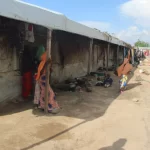Some rural communities in Ghana are facing water challenges due to disparities in access to safe water and sanitation facilities between rural and urban settlements.
Development Diaries reports that the disparity in accessing clean and safe water was made evident following the provision of water systems and toilet facilities by Plan International Ghana in Jasikan Municipality of the Oti Region.
We understand that the facilities cost GH¢1,115,000 for mechanised water pumping systems and GH¢800,000 for modern toilet facilities.
The project, according to the Country Director of Plan International Ghana, Constant Tchona, will bring relief to deprived communities in the Jasikan Municipality of the Oti Region and Mamprusi District, where ten communities are expected to benefit from the facilities.
Currently, about 87.7 percent of Ghana’s population has access to basic water supply services, according to the 2021 Population and Housing Census, as released by the Ghana Statistical Service.
However, as earlier stated, there is a disparity between urban and rural communities, with about 96.4 percent of the urban populace having access to basic water supply services, while 74.4 percent of the rural populace have access to basic water supply services.
Also, about eight percent of Ghanaian households continue to rely on unsafe sources.
Lack of clean water and toilet facilities not only endangers the health of people but also serves as a threat to girls’ education, as girls now refuse to go to school during their menstrual periods.
With about 72,000 children out of school in Ghana, access to safe water and sanitation facilities can provide the boost needed to not just retain girls in school but also encourage their enrolment.
The Ghanaian government needs to ensure that rural communities are prioritised in its effort to provide access to safe water and sanitation facilities across the country.
Photo source: Water Aid







